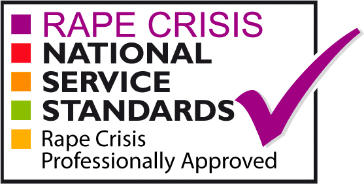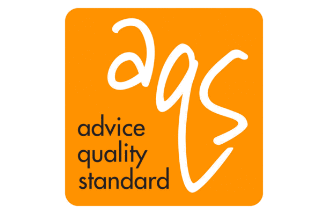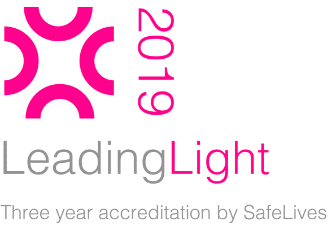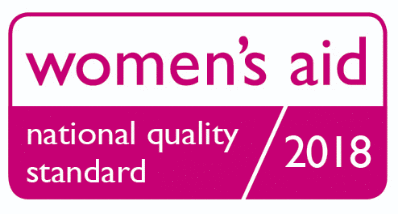Nia believes that forms of domestic and sexual violence and abuse are interlinked.
We know that the majority of women who have experienced abuse will have experienced multiple forms, they rarely exist in isolation, for example:
- 54% of rapes reported to the police took place within the context of domestic violence, that is they were committed by husbands/partners/boyfriends or former husbands/partners/boyfriends
Walby & Allen 2004 (from British Crime Survey)
- As many as 85% women in prostitution report physical abuse in the family, with 45% reporting familial sexual abuse (Paying the Price).
Home Office, Paying the Price. A consultation paper on prostitution, 2004
- Nearly 40% of the cases dealt with by the Forced Marriage Unit concern people under the age of 18 and 85% are women/girls
Forced Marriage Unit
- Nearly three quarters of children on the ‘at risk’ register live in households where domestic violence occurs.
Department of Health, 2002
We also believe that artificially created boundaries between different forms of violence against women isolate organisations, reduce political pressure and force women to search out fragmented support.
So, we position nia as an organisation working to address and end violence against women and children or gender based violence.
nia uses the definition of violence against women provided by the United Nations’ General Assembly Declaration of the Elimination of Violence against Women (resolution 48/104 of December 1993):
“Violence against women” means any act of gender-based violence that results in, or is likely to result in, physical, sexual or psychological harm or suffering to women, including threats of such acts, coercion or arbitrary deprivation of liberty, whether occurring in public or in private life.
Violence against women includes but is not limited to the following:
- Domestic/intimate partner violence – a pattern of coercive control, which includes combinations of physical, sexual, psychological and financial abuse by a current or former partner. In extreme cases this includes murder
- Female genital mutilation/cutting (FGM/C) – involves the complete or partial removal or alteration of external genitalia for non-medical reasons. It is mostly carried out on young girls at some time between infancy and the age of 15. Unlike male circumcision, which is legal in many countries, it is now illegal across much of the globe, and its extensive harmful health consequences are widely recognised
- Forced marriage – a marriage conducted without valid consent of one or both parties, where duress is a factor
- ‘Honour’ based violence – violence committed to protect or defend the ‘honour’ of a family and/or community. Women, especially young women, are the most common targets, often where they have acted outside community boundaries of perceived acceptable feminine/sexual behaviour. In extreme cases the woman may be killed.
- Prostitution and trafficking – women and girls are forced, coerced or deceived to enter into prostitution and/or to keep them there. Trafficking involves the recruitment, transportation and exploitation of women and children for the purposes of prostitution and domestic servitude across international borders and within countries (‘internal trafficking’)
- Sexual violence including rape – sexual contact without the consent of the woman/girl. Perpetrators range from total strangers to relatives and intimate partners, but most are known in some way. It can happen anywhere – in the family/household, workplace, public spaces, social settings, during war/conflict situations
- Sexual exploitation – involves exploitative situations, contexts and relationships where someone receives ‘something’ (eg food, drugs, alcohol, cigarettes, affection, protection money) as a result of them performing, and/or another or others performing on them, sexual activities. Violence, coercion and intimidation are common, involvement in exploitative relationships being characterised in the main by the person’s limited availability of choice resulting from their social/economic and/ or emotional vulnerability. Young women and girls involved in or connected to gangs are at risk of sexual exploitation by gang members
- Sexual harassment – unwanted verbal or physical conduct of a sexual nature. It can take place anywhere, including the workplace, schools, streets, public transport and social situations. It includes flashing, obscene and threatening calls, and online harassment
- Stalking – repeated (ie on at least two occasions) harassment causing fear, alarm or distress. It can include threatening phone calls, texts or letters; damaging property; spying on and following the victim. From The Way Forward – Taking Action to end Violence Against Women and Girls, Greater London Authority, 2010
Coercive Control – Coercive control is when a person with whom you are personally connected, repeatedly behaves in a way which makes you feel controlled, dependent, isolated or scared. Another word for coercive control is entrapment. Coercive control is not the same as emotional abuse, not all emotional abusive is coercive control, but coercive control is always emotionally abusive.
The Committee for the Elimination of All Forms of Discrimination against Women has stated clearly that discrimination includes gender-based violence:
“Violence that is directed against a woman because she is a women or that affects women disproportionately”.





